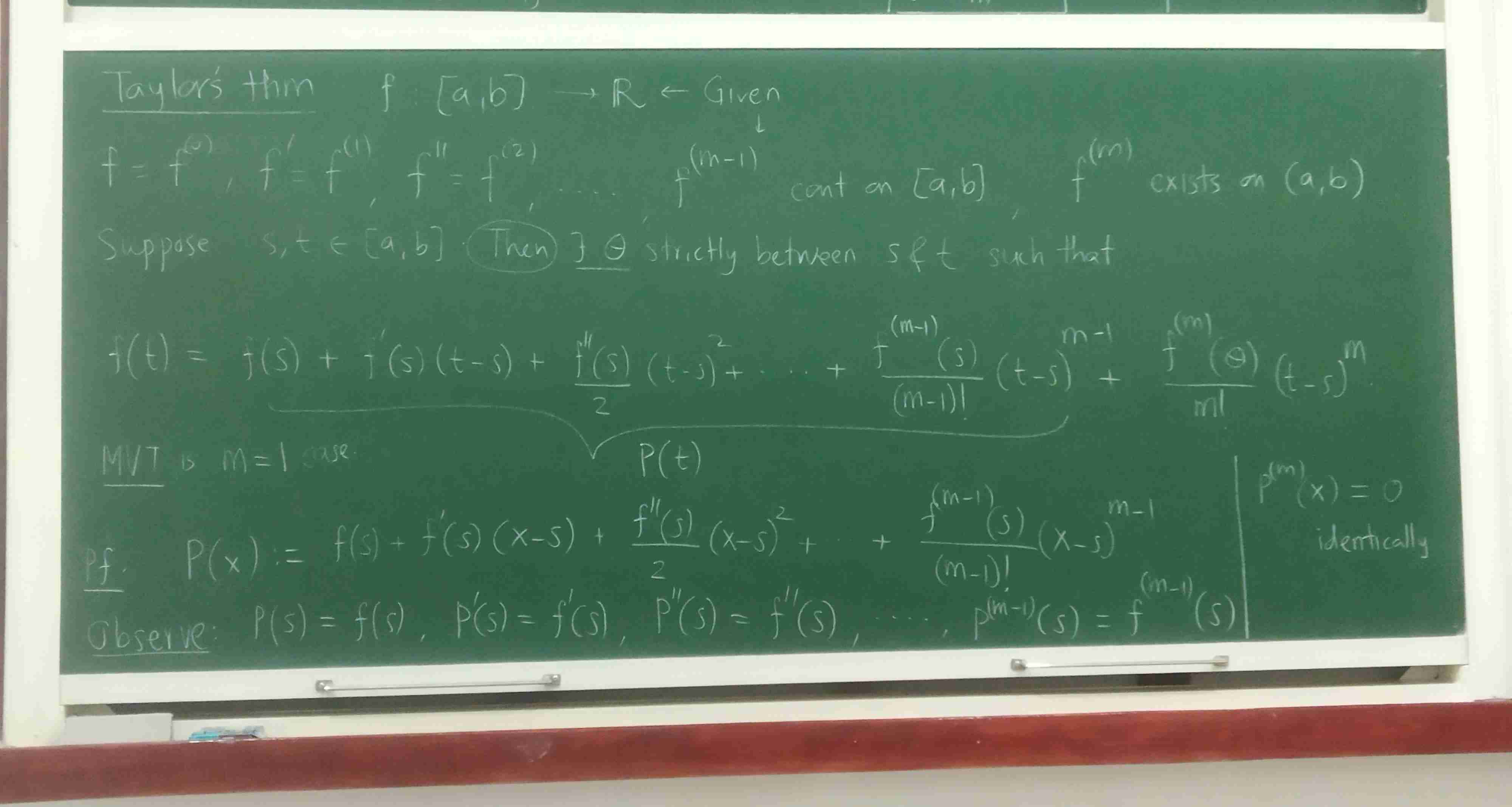
Taylor’s theorem
Let be twice differentiable. Fix . Consider the simplest approximation of that can be made: a constant function.
Here, is a constant polynomial approximation, and is the error. Note that . Now, we can try to refine our approximation by siphoning information from the error function. Consider the limit
Let
Clearly, . Plugging in the value of in terms of in the zero degree approximation gives the first degree approximation at .
How would you obtain a second degree approximation? Once more, consider the limit
and let
Again, . Plugging in the value of in terms of in the first degree approximation yields:
where .
is called the th Taylor polynomial at .
Theorem 147.1(Rudin 5.15).
Suppose , and are continuous on , and exists on . Let .
Then, there exists strictly between and such thatProof.
We have shown that can be expressed as
Let be the number defined by
Define
where . Note that , and . Also note that are zero.
On differentiating both sides times with respect to we get
Now, since and , there must exist between and such that , thanks to the mean value theorem. Again, since and , there must exist between and such that . After steps, we obtain such that . Therefore, .□
If we know that bounds on , we can bound the error!
MVT analogue for vector valued functions
The mean value theorem and L’Hospital’s rule are not true for complex or vector valued functions. For an example of the former, consider the map
. Note that for all . Now,
However, an analogue of the MVT does exist:
Theorem 147.2(Rudin 5.19).
Suppose is a continuous mapping of into and is differentiable in . Then there exists such that
Proof.
Let. Define
Now, is a continuous real function. Thus, the mean value theorem tells us
for some . Also,
Thus,
□